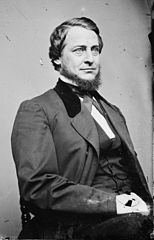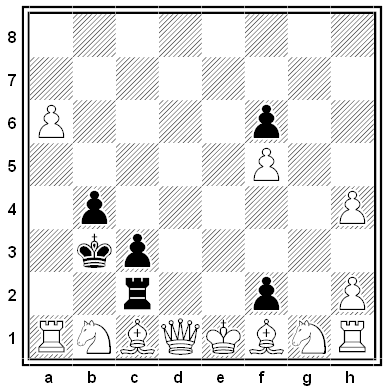The Right Foot
Letter from Lewis Carroll to Adelaide Paine, March 8, 1880:
My dear Ada, — (Isn’t that your short name? ‘Adelaide’ is all very well, but you see when one’s dreadfully busy one hasn’t time to write such long words — particularly when it takes one half an hour to remember how to spell it — and even then one has to go and get a dictionary to see if one has spelt it right, and of course the dictionary is in another room, at the top of a high bookcase — where it has been for months and months, and has got all covered with dust — so one has to get a duster first of all, and nearly choke oneself in dusting it — and when one has made out at last which is dictionary and which is dust, even then there’s the job of remembering which end of the alphabet ‘A’ comes — for one feels pretty certain it isn’t in the middle — then one has to go and wash one’s hands before turning over the leaves — for they’ve got so thick with dust one hardly knows them by sight — and, as likely as not, the soap is lost, and the jug is empty, and there’s no towel, and one has to spend hours and hours in finding things — and perhaps after all one has to go off to the shop to buy a new cake of soap — so, with all this bother, I hope you won’t mind my writing it short and saying, ‘My dear Ada’).
You said in your last letter that you would like a likeness of me; so here it is, and I hope you will like it. I won’t forget to call the next time but one I’m in Wallington.
Your very affectionate friend,
Lewis Carroll
Q.E.D.

Clement Vallandigham accidentally shot himself demonstrating how one might accidentally shoot oneself. The Ohio lawyer was representing a defendant accused of killing a man in a barroom brawl. Vallandigham wanted to show that the victim might have shot himself while trying to draw his pistol from a kneeling position.
“I’ll show you how Tom Myers shot himself,” he said to his fellow defense attorneys in discussing the case. He put a gun into his pocket and began to draw it. “There, that’s the way Myers held it,” he said, “only he was getting up, not standing erect.” And he touched the trigger.
“A sudden flash — the half suppressed sound of a shot — and Clement L. Vallandigham, with an expression of agony, exclaimed: ‘My God, I’ve shot myself!’ and reeled toward the wall a wounded and dying man — wounded and dying by his own hands.”
He died of peritonitis, but he’d proved his point — the defendant was acquitted.
Podcast Episode 21: A Gallant German Fighter Ace

In December 1943, American bomber pilot Charlie Brown was flying a severely damaged B-17 out of Germany when he looked out the cockpit window and saw “the world’s worst nightmare” off his right wing — a fully armed German fighter whose pilot was staring back at him.
In this episode of the Futility Closet podcast we’ll follow the strange drama that ensued, in which German fighter ace Franz Stigler weighed the human impulse to spare the wounded bomber against his patriotic duty to shoot him down. We’ll also consider whether animals follow the 10 commandments and wonder why a man might tell his nephew that his dog will be shot.
Private Line
The Barossa Reservoir dam in South Australia is a “whispering wall” — sound hugs the arc of the dam, so two people at opposite ends of the 140-meter span can have a conversation that’s inaudible to those in the middle.
There’s a whispering arch outside the Oyster Bar in Grand Central Station — a feature that has some creative uses:
See Oops.
Carper’s Index
No one knows who devised the cross-references in William Hawkins’ 1795 Treatise of the Pleas of the Crown, but he was either very wry or very cynical:
Cattle see Clergy.
Chastity see Homicide.
Coin see High Treason.
Convicts see Clergy.
Death see Appeal.
Election see Bribery.
Fear see Robbery.
Footway see Nuisance.
Honour see Constable.
Incapacity see Officers.
King see Treason.
Knaves see Words.
Letters see Libel.
London see Outlawry.
Shop see Burglary.
Threats see Words.
Westminster Hall see Contempt and Lie.
“A plain, unlettered man is led to suspect that the writer of the volume and the writer of the index are playing at cross purposes,” noted the Monthly Magazine. Perhaps they were.
Unlikely Similes
Winston Churchill said that playing golf was “like chasing a quinine pill around a cow pasture.”
For twenty years I’ve stared my level best
To see if evening — any evening — would suggest
A patient etherised upon a table;
In vain. I simply wasn’t able.
— C.S. Lewis
In 1910, unable to get his one-act play “The First Poet” published, George Sterling prevailed on his friend Jack London to publish it under his own name. London resisted, pointing out that Sterling had already shown the play to Herbert Heron and Mike Williams, who would recognize it. He wrote:
“Your showing ‘The First Poet’ to Heron and Williams, and then coming on and asking me to father it, is equivalent to exposing your penis to a couple of 90¢ alarm clocks, and then trying to rape a quail. I’m the quail. And if I let you rape me, both alarm clocks would immediately go off and tell the news to the world.”
Eventually he relented, and “The First Poet” appeared in the Century Magazine in June 1911 under London’s name. The fact of Sterling’s authorship came to light only later.
Unquote

“Good can imagine Evil, but Evil cannot imagine Good.” — W.H. Auden
“Good men seek it by the natural means of the virtues; evil men, however, try to achieve the same goal by a variety of concupiscences, and that is surely an unnatural way of seeking the good. Don’t you agree?” — Boethius
“For never, never, wicked man was wise.” — Homer
“Men may keep a sort of level of good, but no man has ever been able to keep on one level of evil.” — G.K. Chesterton
American artist Dennis Oppenheim denied that his 1997 Device to Root Out Evil, above, had an anti-religious message. “Pointing a steeple into the ground directs it to hell as opposed to heaven,” he told one interviewer. “It’s a very simple gesture.”
‘Cartes Blanche

At a dinner party, René Descartes’ wife posts him next to the shrimp table and tells him not to let the guests eat until an hour after midnight. When a guest reaches for a shrimp, Descartes stops him and says, “I think they’re for 1 a.m.”
René Descartes is sitting in a bar. The bartender asks him if he’d like another drink. He says, “I think not” — and vanishes.
“I think, therefore Descartes is.” — Saul Steinberg
There was a young student called Fred
Who was questioned on Descartes and said:
“It’s perfect clear
That I’m not really here,
For I haven’t a thought in my head.”
— V.R. Ormerod
In 1988 German artist Rosemarie Trockel offered a 210 x 160-centimeter linen panel on which the words cogito ergo sum had been knitted — by machine.
Black and White

Tim Krabbé calls this “one of the funniest chess problems I ever saw.” Its composer, M. Kirtley, won first prize with it in a Problemist tourney in 1986.
It’s a selfmate in 8, which means that White must force Black to checkmate him 8 moves, despite Black’s best efforts to avoid doing so.
The solution is a single line — all of Black’s moves are forced:
1. Nb1+ Kb3 2. Qd1+ Rc2 3. Bc1 axb6 4. Ra1 b5 5. Rh1 bxc4 6. Ke1 c3 7. Ng1 f3 8. Bf1 f2#

All of White’s pieces have returned to their starting squares!

